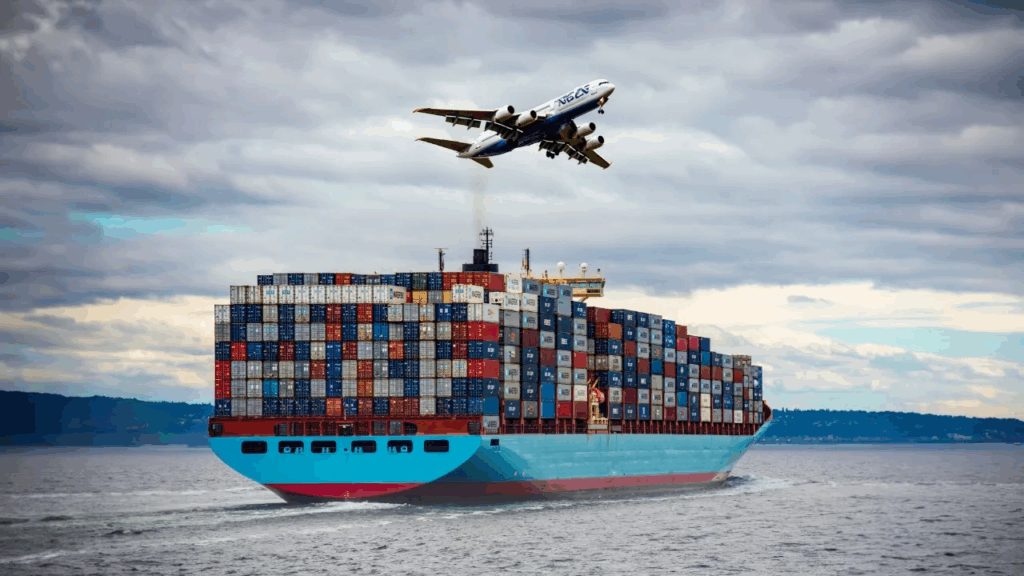International Shipping Tracking Challenges in the Fashion Industry
International Shipping Tracking Challenges in the Fashion Industry affect brands, suppliers, and customers across the globe. The fashion market moves fast, with trends shifting quickly and customers expecting speedy deliveries. But tracking shipments in this industry is far from simple. From delays at customs to inconsistent carrier updates, businesses face obstacles that can hurt sales, reputation, and customer loyalty.
This guide explains the key tracking challenges in fashion logistics, why they matter, and how companies can prepare for solutions.

1. Why International Shipping Tracking Matters in Fashion Industry Logistics
1.1 Fast Fashion Timelines
Fashion cycles are short. A design popular this month may be outdated next season. When tracking systems fail, products arrive late and lose value in the market.
1.2 High Customer Expectations
Shoppers now expect real-time updates. They want to know exactly when their package leaves the warehouse, enters customs, and reaches their door. Missing updates create frustration and reduce trust.
1.3 Complex Global Networks
Most fashion products are manufactured in one country, shipped to another for finishing, and then distributed worldwide. Tracking across this chain requires multiple systems to work together.
2. Core International Shipping Tracking Challenges
2.1 Limited Visibility Across Carriers
One of the biggest challenges is that fashion shipments often move across multiple carriers. Each carrier has its own tracking system. Connecting them into one smooth process is difficult, leaving gaps in visibility.
2.2 Customs Delays and Lack of Updates
Fashion products often face extra customs checks, especially if they involve textiles, leather, or luxury materials. While goods sit in inspection, tracking systems sometimes stop showing movement. Customers may believe their package is lost.
2.3 Inconsistent Tracking Standards

Not all carriers use the same scan technology. Some provide detailed real-time GPS updates, while others only confirm departure and arrival. This inconsistency creates confusion for both retailers and shoppers.
2.4 High Volume During Seasonal Peaks
Fashion experiences sharp peaks during holidays, new launches, or discount sales. During these times, carriers handle massive volumes. Systems slow down, scans get missed, and international shipping tracking becomes unreliable.
3. Customer Experience and Brand Impact
3.1 How Tracking Builds Trust
Clear tracking increases confidence. Customers who can follow their package step by step feel more secure and satisfied, knowing the brand values transparency.
3.2 When Tracking Fails
If updates stop for days, customers begin contacting support. Fashion brands then face more workload, higher costs, and sometimes negative reviews that damage long-term loyalty.
3.3 The Social Media Effect
In fashion, customer experience spreads quickly on social platforms. A failed delivery or missing update can go viral, hurting brand reputation across regions and discouraging future purchases.
4. Fashion-Specific Tracking Obstacles
4.1 Multi-Item Orders and Customer Trust in Shipping
Fashion customers often buy several products in one order. When shipments split across multiple packages, tracking becomes harder to unify. Customers may receive one item but see no updates on the rest.
4.2 International Returns

Fashion has one of the highest return rates of any industry. When items travel back across borders, tracking often becomes less reliable, leaving customers unsure of refund timelines.
4.3 Counterfeit Risks
Fashion shipments are sometimes targets for theft or replacement with counterfeits. Tracking gaps make it difficult to prove when and where such issues happened.
5. The Technology Gap
5.1 Outdated Systems
Some carriers still rely on manual scanning. This means if a barcode is missed, the package appears stuck, even if it is moving.
5.2 Integration Problems
Retailers may use modern platforms, but smaller carriers or local couriers in emerging markets may not connect smoothly. The result is broken data chains.
5.3 Lack of Real-Time GPS
While industries like food delivery already use real-time GPS, many international carriers have yet to adopt this for fashion logistics.
6. Solutions Fashion Brands Are Exploring
6.1 Unified Tracking Platforms
Some businesses use third-party platforms that collect data from multiple carriers. This gives customers a single place to check updates.
6.2 Better Customs Communication

By working closely with customs brokers, fashion companies can reduce clearance delays. Some systems now notify customers as soon as inspections begin.
6.3 AI and Predictive Tracking
Artificial intelligence can predict delays based on past shipments and traffic patterns. Instead of waiting for scans, customers see estimated updates in real time.
6.4 Blockchain for Supply Chain Transparency
Blockchain is being tested to give every shipment a secure and unchangeable record. This improves trust and reduces risks of counterfeits or tampering.
7. PostalParcel’s Approach to the Fashion Industry
PostalParcel recognizes the unique pressure on fashion logistics. The platform offers:
- Real-time tracking that integrates multiple carriers
- Tools designed to support seasonal sales spikes
- Data protection measures that reduce risks of fraud
- Clear communication systems for both retailers and customers
By focusing on transparency and visibility, PostalParcel helps fashion businesses maintain customer trust even in complex cross-border shipping. The platform is built to adapt quickly to industry changes, offering flexible solutions when unexpected delays occur. This agility allows fashion retailers to keep promises to customers, strengthen brand loyalty, and ensure smoother global operations despite the challenges of international supply chains.
8. Preparing for the Future

8.1 Rising Demand for Transparency
Younger consumers expect more than basic international shipping tracking. They want details about where their product was made, which route it took, and when it will arrive.
8.2 Sustainable Shipping Concerns
Tracking also connects with sustainability. Fashion brands now highlight carbon-neutral shipping, and clear updates help prove these claims.
8.3 The Role of Collaboration
No single carrier can solve international shipping tracking challenges alone. Partnerships between platforms, carriers, and regulators will drive improvement in the next decade.
Conclusion
International Shipping Tracking Challenges in the Fashion Industry show how complex global logistics can be. From customs delays to inconsistent carrier systems, fashion brands must navigate many barriers to keep customers happy. The impact of poor tracking goes beyond missed delivery dates—it affects trust, reputation, and long-term loyalty.
By investing in unified tracking solutions, adopting new technology, and working with partners like PostalParcel, fashion businesses can reduce risks and deliver better customer experiences. The fashion industry moves fast, but with stronger tracking systems, companies can stay ahead of delays and build confidence worldwide.
Industry Insights
news via inbox
Nulla turp dis cursus. Integer liberos euismod pretium faucibua








